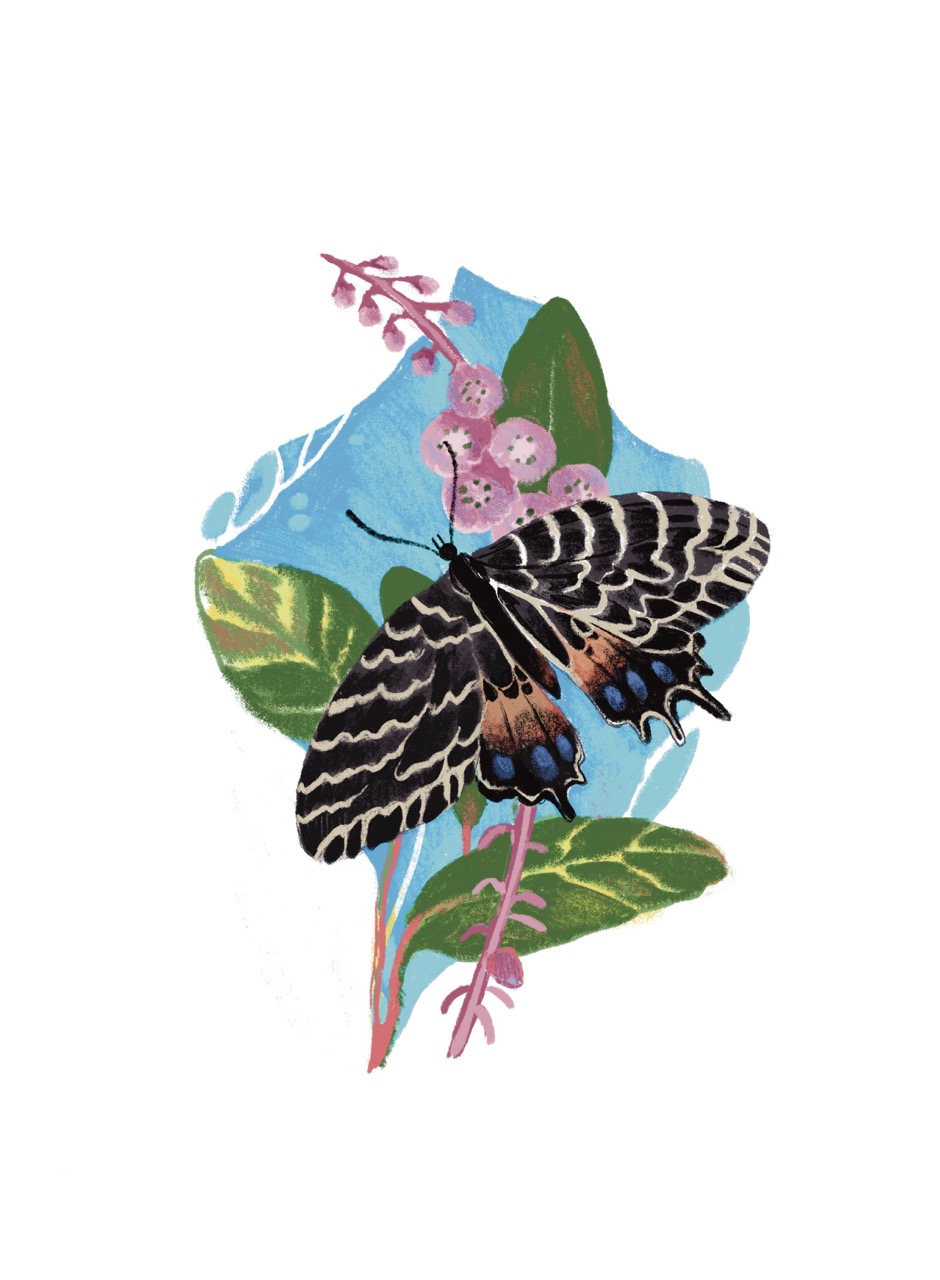Butterflies play a crucial role in the ecosystem—as pollinators, but also as prey for a wide range of predators, in addition to being bioindicators that signal the health of the environment. Their conservation in turn will lead to the bottom-up preservation of the entire habitat.
However, a lack of data on the life history and ecology of several butterflies poses a serious challenge to designing proper conservation interventions for the concerned species. One striking example of this is Ludlow’s Bhutan glory, a species that is rare in the wild and classified as Endangered on the IUCN Red List.
Ludlow’s Bhutan glory (Bhutanitis ludlowi) was first discovered by British naturalists Frank Ludlow and George Sheriff in 1933–34 in upper Trashiyangtse Valley, Bhutan. Alfred Gabriel formally described the species in 1942. In 2009, after a significant gap of 67 years, it was rediscovered in the same region. The butterfly was then considered endemic to Bhutan, following which the government took steps to study the species.
An expedition was soon arranged in the Trashiyangtse region, which reported more observations of the species from the Trashiyangtse Valley and small pockets of Bumdeling Wildlife Sanctuary. Along with his team, Tshering Dendup—Chief Forestry Officer of Pemagatshel Divisional Forest Office, Department of Forests and Park Services—documented the life history of Ludlow’s Bhutan glory. The species was then designated as the National Butterfly by the government of Bhutan.
Across the border
In 2011, three years after the rediscovery of Ludlow’s Bhutan glory in Bhutan, the species was first recorded in the neighbouring northeastern Indian state of Arunachal Pradesh. Later expeditions recorded more observations from Eaglenest Wildlife Sanctuary. While these findings significantly expanded the species’ range outside Bhutan—where it was previously considered endemic to the country—it is still only known to occur in a few localities across this range.
Despite being a protected species under Schedule I of the Wildlife Protection Act (1972), there are no projects or policies in place to conserve the globally threatened Ludlow’s Bhutan glory across its limited range in India. Moreover, there is a complete lack of information on the population status and life history of the species in the country.
The first photographic record of an early stage in the life cycle of Ludlow’s Bhutan glory was obtained in 2018 from Eaglenest Wildlife Sanctuary. In 2023, we—colleagues from Nature Mates-Nature Club, a Kolkata-based NGO dedicated to butterfly conservation across the country—initiated the first project in India focused on this species.
Through this project, we are studying the life cycle of Ludlow’s Bhutan glory as well as conducting awareness campaigns to involve the local community and state Forest Department staff in our conservation efforts. We are also working closely with the staff to estimate the population of the species. Despite the difficult mountainous terrain and unfavourable weather conditions, our team found a good number of adults inside the sanctuary.
Grave danger
Its highly restricted range and distribution make Ludlow’s Bhutan glory extremely vulnerable to extinction, even with slight changes in its environment. Unfortunately, the Indian population of the species is threatened by habitat loss and disturbance as well as illegal trade.
Like all other butterflies, Ludlow’s Bhutan glory is heavily reliant on its larval host plant Aristolochia griffithii and specific plants for nectar. The forests of Eaglenest Wildlife Sanctuary have seen a recent surge in unplanned developmental activities, which are often accompanied by indiscriminate logging, leading to the destruction of important resource plants for the species. Ludlow’s Bhutan glory is also internationally traded on account of its beauty as well as rarity in the wild. It is therefore listed under Appendix II of the Convention on International Trade in Endangered Species of Wild Fauna and Flora (CITES), which includes species that are not traded in large numbers but could be vulnerable if trade increases.
The way forward
Conservation efforts at Eaglenest Wildlife Sanctuary are mostly focused on birds and big mammals, while insects such as butterflies go unnoticed. Hence, we are working to incorporate butterflies into the existing ecotourism model followed by the local community. To this end, we conducted butterfly walks to spread awareness, which in turn will boost our efforts to conserve Ludlow’s Bhutan glory through the active participation of local people.
We are also collaborating with the Forest Department and members from the local Community Reserve Forest to increase vigilance and prevent illegal collection of Ludlow’s Bhutan glory—an initiative supported by the Conservation Leadership Programme.
The long-term conservation of this magnificent butterfly requires a holistic approach and relies on strong cooperation between local stakeholders, community members and administration.
Further Reading
Igarashi, S. and H. Fukuda. 2000. The life histories of Asian butterflies, Volume 2. Tokyo: Tokai University Press.
Wang, Z., W. Chan, N. Pham, J. Zeng, N. Pierce, D. Lohman and W. Meng. 2023. One in five butterfly species sold online across borders. Biological Conservation 283: 110092. https://doi.org/10.1016/j.biocon.2023.110092






